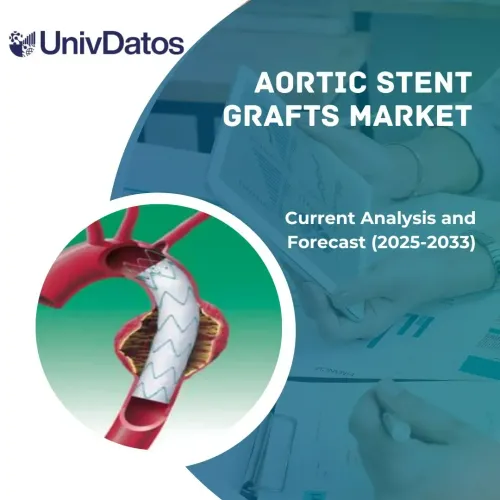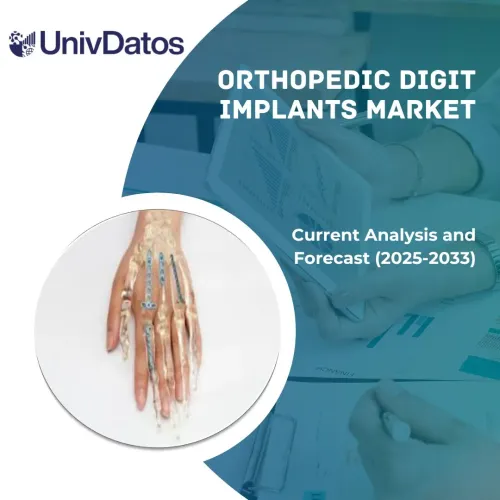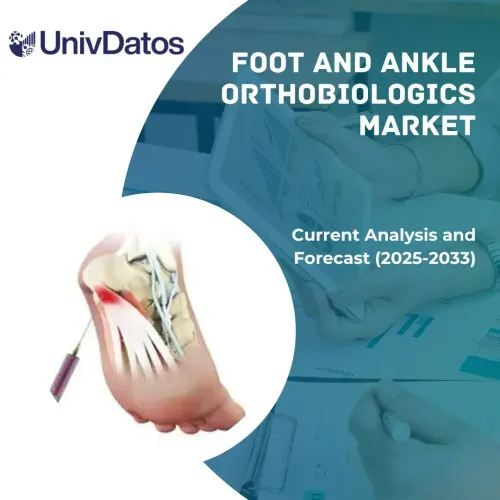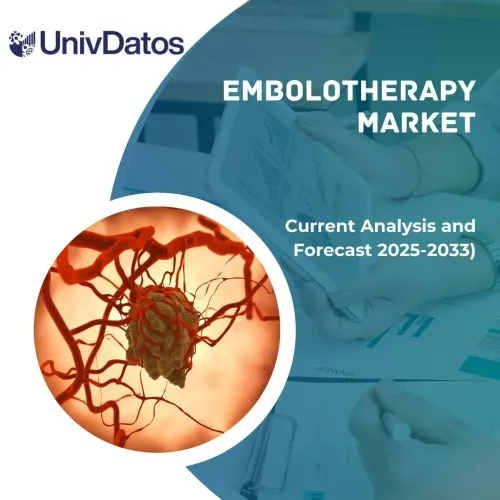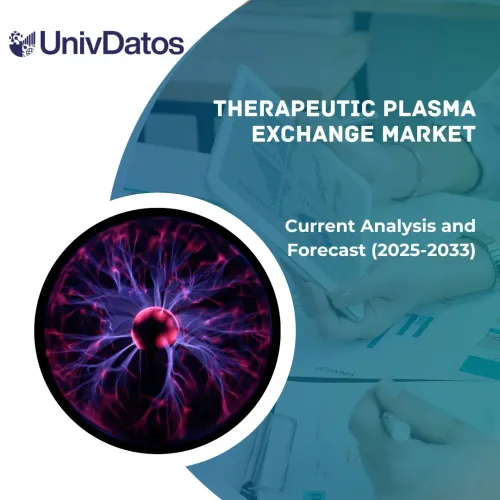- Home
- About Us
- Industry
- Services
- Reading
- Contact Us
Neurologic Disorders Therapeutics Market: Current Analysis and Forecast (2022-2028)
Emphasis on Diseases (Neurovascular Diseases, CNS, Trauma, Neurodegenerative Diseases, Infectious Diseases, CNS Cancer, and Others); Drug Class (Analgesics, Anesthetics, Anticonvulsants, Antiepileptics, Anti-Parkinson Agents, and Others); Application (Hospital Pharmacies, Retail Pharmacies, Online Pharmacies, and Others); and Region/Country
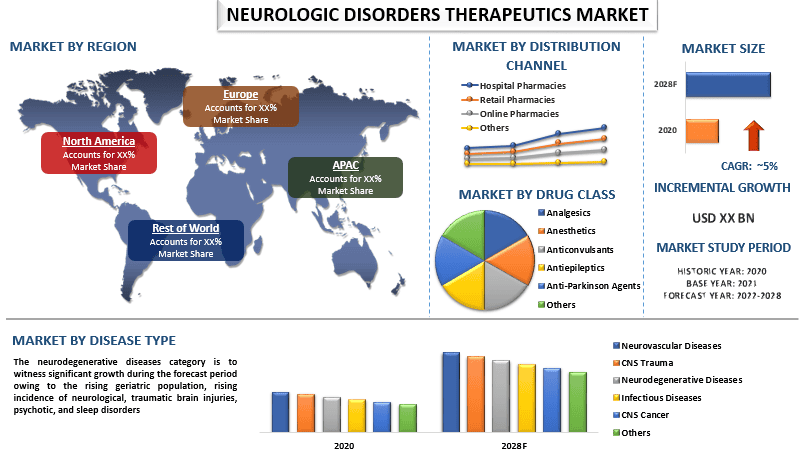
The global neurologic disorders therapeutics Market is expected to grow at a significant rate of around 5% during the forecast period. Neurologic disorder is a disorder of the nervous system. As per various studies, the growth of these neurological disorders is spreading rapidly across the world and becoming increasingly common, especially neurodegenerative diseases. Furthermore, Neurologic disorders therapeutics is expected to have the fastest growth rate in the market mainly due to the availability of skilled healthcare professionals, and the safety & efficacy during the treatment procedures. Moreover, the growing patient pool suffering from neurovascular diseases such as brain aneurysms, and arteriovenous malformations are also contributing to the growth of this market during the forecast period. For instance, according to the Brain Aneurysms Foundation, about 30,000 people in the United States suffer a brain aneurysm rupture each year.
AbbVie Inc., F. Hoffmann La Roche Ltd., GlaxoSmithKline Plc, Johnson and Johnson, Mylan NV, Novartis AG, Pfizer Inc., Sanofi, Teva Pharmaceutical Industries Ltd., Merck KGaA are some of the key players in the market. Several M&As along with partnerships have been undertaken by these players to facilitate customers with hi-tech and innovative products/technologies.
Insights Presented in the Report
“Amongst disease type, neurodegenerative diseases category to witness robust CAGR during the forecast period”
Based on disease type, the market is segmented into neurovascular diseases, CNS trauma, neurodegenerative diseases, infectious diseases, CNS cancer, and others. The neurodegenerative diseases category is to witness considerable growth during the forecast period. This is mainly due to the increasing brain injuries, cerebral disorders, and rising prevalence of hypertension in the geriatric population are the major factors for the growth of the neurologic disorder’s therapeutics market during the forecast period. For instance, according to the Brain Aneurysm Foundation, an estimated 6 million Americans are affected by cerebral aneurysms.
“Amongst drug class, the antiepileptics to hold a significant share in the market in 2020”
On the basis of drug class, the market is categorized into analgesics, anesthetics, anticonvulsants, antiepileptics, antiparkinson agents, and others. Among these, the antiepileptics category is to witness significant growth during the forecast period. This is mainly due to these drugs prevent seizures, either by decreasing excitation or enhancing inhibition. Moreover, the growing prevalence of epilepsy demanding for therapeutically effective medications is creating pressure among the market players to introduce AEDs. For instance, in January 2020, Eisai Co. Ltd. announced the launch of FYCOMPA in China for the treatment of partial-onset seizures in patients aged 12 years and older.
“North America to hold a significant share in the market”
For a better understanding of the market adoption of the neurologic disorders therapeutics industry, the market is analyzed based on its worldwide presence in the countries such as North America (U.S., Canada, Rest of North America), Europe (Germany, U.K., France, Spain, Italy, Rest of Europe), Asia-Pacific (China, Japan, India, Rest of Asia-Pacific), Rest of World. North America is expected to witness significant growth in the market owing to the availability of market players in the region and the rising initiative undertaken by key players to develop various therapies for different neurological disorders are the major factors that are expected to increase the market share. Moreover, the growing cases of mental health and neurodegenerative disorders such as multiple sclerosis, Alzheimer’s, Parkinson’s disease, and brain cancer is fueling the demand for neurologic disorders therapeutics in the region. For instance, around 70,800 people in the United States are diagnosed with brain cancer every year, which represents 1.4% of the total cancer incidence and causes about 2.4% of all cancer deaths in the U.S.
Reasons to buy this report:
- The study includes market sizing and forecasting analysis validated by authenticated key industry experts.
- The report presents a quick review of overall industry performance at one glance.
- The report covers an in-depth analysis of prominent industry peers with a primary focus on key business financials, product portfolio, expansion strategies, and recent developments.
- Detailed examination of drivers, restraints, key trends, and opportunities prevailing in the industry.
- The study comprehensively covers the market across different segments.
- Deep dive regional level analysis of the industry.
Customization Options:
The global neurologic disorders therapeutics market can further be customized as per the requirement or any other market segment. Besides this, UMI understands that you may have your own business needs, hence feel free to connect with us to get a report that completely suits your requirements.
Table of Content
Research Methodology for the Neurologic Disorders Therapeutics Market Analysis (2022-2028)
Analyzing the historical market, estimating the current market, and forecasting the future market of the global neurologic disorders therapeutics market were the three major steps undertaken to create and analyze the adoption of neurologic disorders therapeutics in major regions globally. Exhaustive secondary research was conducted to collect the historical market numbers and estimate the current market size. Secondly, to validate these insights, numerous findings and assumptions were taken into consideration. Moreover, exhaustive primary interviews were also conducted, with industry experts across the value chain of the global neurologic disorders therapeutics Market. Post assumption and validation of market numbers through primary interviews, we employed a top-down/bottom-up approach to forecasting the complete market size. Thereafter, market breakdown and data triangulation methods were adopted to estimate and analyze the market size of segments and sub-segments of the industry pertains to. Detailed methodology is explained below:
Analysis of Historical Market Size
Step 1: In-Depth Study of Secondary Sources:
Detail secondary study was conducted to obtain the historical market size of the neurologic disorders therapeutics market through company internal sources such as annual reports & financial statements, performance presentations, press releases, etc., and external sources including journals, news & articles, government publications, competitor publications, sector reports, third-party database, and other credible publications.
Step 2: Market Segmentation:
After obtaining the historical market size of the neurologic disorders therapeutics market, we conducted a detailed secondary analysis to gather historical market insights and share for different segments & sub-segments for major regions. Major segments are included in the report as disease type, drug class, and distribution channel. Further country-level analyses were conducted to evaluate the overall adoption of testing models in that region.
Step 3: Factor Analysis:
After acquiring the historical market size of different segments and sub-segments, we conducted a detailed factor analysis to estimate the current market size of the neurologic disorders therapeutics Market. Further, we conducted factor analysis using dependent and independent variables such as various disease type, drug class, and distribution channels of neurologic disorders therapeutics. A thorough analysis was conducted for demand and supply-side scenarios considering top partnerships, mergers and acquisitions, business expansion, and product launches in the neurologic disorders therapeutics market sector across the globe.
Current Market Size Estimate & Forecast
Current Market Sizing: Based on actionable insights from the above 3 steps, we arrived at the current market size, key players in the global neurologic disorders therapeutics market, and market shares of the segments. All the required percentage shares split, and market breakdowns were determined using the above-mentioned secondary approach and were verified through primary interviews.
Estimation & Forecasting: For market estimation and forecast, weights were assigned to different factors including drivers & trends, restraints, and opportunities available for the stakeholders. After analyzing these factors, relevant forecasting techniques i.e., the top-down/bottom-up approach were applied to arrive at the market forecast for 2028 for different segments and sub-segments across the major markets globally. The research methodology adopted to estimate the market size encompasses:
- The industry’s market size, in terms of revenue (USD) and the adoption rate of the neurologic disorders therapeutics market across the major markets domestically
- All percentage shares, splits, and breakdowns of market segments and sub-segments
- Key players in the global neurologic disorders therapeutics market in terms of products offered. Also, the growth strategies adopted by these players to compete in the fast-growing market
Market Size and Share Validation
Primary Research: In-depth interviews were conducted with the Key Opinion Leaders (KOLs) including Top Level Executives (CXO/VPs, Sales Head, Marketing Head, Operational Head, Regional Head, Country Head, etc.) across major regions. Primary research findings were then summarized, and statistical analysis was performed to prove the stated hypothesis. Inputs from primary research were consolidated with secondary findings, hence turning information into actionable insights.
Split of Primary Participants in Different Regions
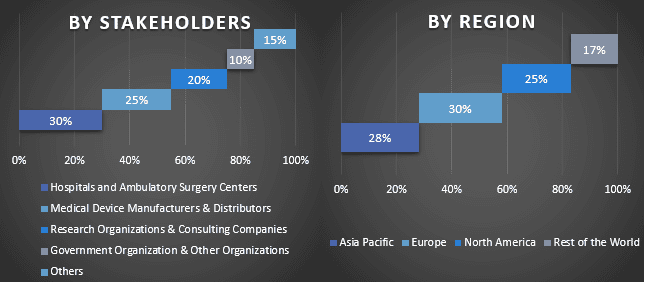
Market Engineering
The data triangulation technique was employed to complete the overall market estimation and to arrive at precise statistical numbers for each segment and sub-segment of the global neurologic disorders therapeutics market. Data was split into several segments & sub-segments post studying various parameters and trends in the areas of disease type, drug class, and distribution channel in the global neurologic disorders therapeutics market.
The main objective of the Global Neurologic Disorders Therapeutics Market Study
The current & future market trends of the global neurologic disorders therapeutics market were pinpointed in the study. Investors can gain strategic insights to base their discretion for investments on the qualitative and quantitative analysis performed in the study. Current and future market trends determined the overall attractiveness of the market at a regional level, providing a platform for the industrial participant to exploit the untapped market to benefit from a first-mover advantage. Other quantitative goals of the studies include:
- Analyze the current and forecast market size of the neurologic disorders therapeutics market in terms of value (USD). Also, analyze the current and forecast market size of different segments and sub-segments
- Segments in the study include areas of disease type, drug class, and distribution channel.
- Define and analysis of the regulatory framework for the neurologic disorders therapeutics
- Analyze the value chain involved with the presence of various intermediaries, along with analyzing customer and competitor behaviors of the industry.
- Analyze the current and forecast market size of the neurologic disorders therapeutics market for the major region.
- Major countries of regions studied in the report include Asia Pacific, Europe, North America, and the Rest of the World.
- Company profiles of the Neurologic Disorders Therapeutics Market and the growth strategies adopted by the market players to sustain in the fast-growing market
- Deep dive regional level analysis of the industry
Related Reports
Customers who bought this item also bought




